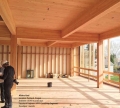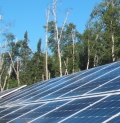The Business Case for High Performace Buildings
Buildings represent nearly 40% of final energy used globally. If we include the energy consumed in building construction, this number grows to more than 50%. However, large and attractive opportunities exist to reduce buildings’ energy use at a lower societal cost and a higher return than in other sectors.
- The World Business Council for Sustainable Design & Energy Efficiency in Buildings
The Business Case for High Performace Buildings
Buildings represent nearly 40% of final energy used globally. If we include the energy consumed in building construction, this number grows to more than 50%. However, large and attractive opportunities exist to reduce buildings’ energy use at a lower societal cost and a higher return than in other sectors.
- The World Business Council for Sustainable Design & Energy Efficiency in Buildings
Visible City's Real Estate Analysis
Visible City is an applied GIS (Geographic Information Systems) developer and practitioner group.(https://www.visible.city) The Visible City's team expertise extends across many aspects of planning for the man-built environment including insights into placement of real estate investments.
Visible City is currently collaborating with Wilkinson Building Advisors and the affiliated Sustainable Business Building Group's Building in a Box initiative.
More...
The cultural headwinds have long been on the bow of the so-called design-build movement. It took nearly 50 years of cultural warfare for the various participants to see their integrative potential.
It is easy to see how the cultural divide is built into the DNA of the various designers, engineers, builders, salespeople, financial engineers, and business managers; they are all different people with different worldviews and ways of behaving. The marketplace finally demanded cooperation and collaboration. By the 1990’s, the acceptance of the design-build approach was no longer in dispute.
FFE - Furniture, Fixtures, and Equipment - (fixed or otherwise) are needed to complete your project and are not always expressly included in traditional design and construction services.
Examples are:
- Security systems (designers and builders don’t want the liability)
- Data and communication systems (often part of the business work flow)
- Furniture and accessories (includes plants and specialties)
- Modular furniture and work stations (often called “cubicles”)
- Decorations (includes wall art)
- Special equipment (cooling systems for computer equipment etc)
Applied technology in the building industry is now at a tipping point. The intersection of timber construction technologies with indoor climate energy exchange and management is creating powerful new market opportunities.
Application of solar energy collection and use into a building project involves a sequence of planning, design, construction, operational actions as well as financial engineering.
In the case of an existing site and building what constitutes “solar ready”?




